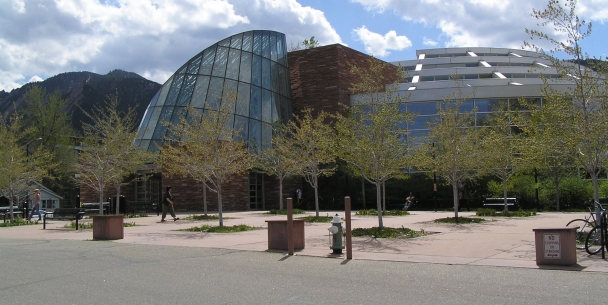A letter writer to the Daily Camera last week said that the city has done nothing for four years to trim expenses, and then offered this bromide: fire people “at the top of the food chain” and cancel some cell phone contracts.
Cutting top management or targeting a single budget item in a vacuum is not the long-term solution to the city budget. The city needs to take a hard look at long-term budget issues such as staffing efficiencies, technological efficiencies and the level of services that should be provided to the community.
The City Manager and the Council have acted with prompt regularity to deal with budget issues and have sought frequent input from the public to inform those decisions. We have challenges at two scales of time: the 12-month budget cycle and the 25-year planning horizon.
Last year, for example, Boulder City Council adopted a 2010 budget that cuts total spending by $13 million from the previous year’s budget. $5 million of that savings are reductions in department operating budgets, increasing efficiency, cutting services, and eliminating 26 full-time positions. Those steps balanced the current budget and made significant gains in closing the city’s long-term funding gap.
How serious is the funding gap?
The recession of 2001 and the aftershock of 9/11 dropped sales tax revenues to the general fund—to take one portion of the budget—from $80 million to $68 million. It would be seven years before the sales tax revenue topped $80 million again—but by that time, the purchasing power of $80 million had been severely eroded.
The City Manager and the City Council realized a number of years ago that the gap between revenues and expenses would widen. A Blue Ribbon Commission (“BRC”) was convened to study how the gap could be addressed. The BRC identified in 2008 a menu of things that the city could do to adjust fees and raise revenues. Most of the things on the menu cannot be implemented all at once, because many of them require the approval of ballot measures by the voters, and others require education and outreach to the community to see if specific proposals receive support. The City Manager and the Council convened BRC II to provide specific ideas about how the city could deliver city services at lower cost.
What actions have been taken?
The Council, staff and voters have been very active during the last two years in addressing the gap between revenues and expenses. The 0.38% and 0.15% sales taxes were extended by the voters at elections in 2008 and 2009. The voters deBruced the city’s portion of property tax in 2008, permitting the city to keep rather than refund revenues to support city services. The Council fully implemented the Climate Action Plan Tax and the Trash Tax—both of which were previously approved by the voters—in order to reduce GHG emissions and move closer to the City goal of Zero Waste.
The Council has fully funded the Economic Vitality program during the last two years, in order to retain businesses in Boulder, and to help some businesses expand rather than move to another city. During the same time, the Council has made new growth pay more of its own way (rather than be subsidized by existing residents) with five discrete actions:
- Changing building permit and plan check fees;
- Adjusting development excise taxes;
- Eliminating the Education Excise Tax;
- Changing impact fees to support public safety, library, parks, recreation and human services; and
- Updating Plant Investment fees to reflect the actual cost of providing water, sewer and storm water services to the city. These actions led to some users and taxpayers paying lower rates, while others will pay higher rates, but it achieved overall greater fairness in how fees were levied.
Hard decisions are being made:
The 2010 budget is part of a long-term approach to address the funding gap by cutting nonessential services provided to Boulder residents. However, we continue funding critical services such as police, fire, safety and human services. The City Manager with the support of Council has moved to priority-based budgeting which will require all city programs to demonstrate specifically how the program contributes to community goals and to the life and well-being of the residents. A similar model is being developed for city employee compensation; the city recently began to move toward a pay-for-performance compensation model that reflects the private sector, and eliminates automatic raises for management/non-union employees. The city also is restructuring several departments to reduce overhead costs and streamline efficiencies. These are critical steps in balancing the budget. However, we also need to address what services the city must provide versus what services it could provide. This was the purpose of the BRC II report – to call out guiding principles that would inform Council and residents of the trade-off decisions that will need to be made in this new economy.
The budget is the lifeblood of the city. It is where goals and aspirations get a cold water plunge. From April through October, City Council is rarely more than two weeks away from study or action on major budget items. This community has long recognized that a high level of city services can only be maintained if people are willing to pay for them. Much of our work on Council is devoted to assuring that the programs that receive funding are those that are rooted in widely shared goals and values of the community, and that the programs are cost effective. This requires a big-picture perspective on the city budget, and it is the approach Council and the City Manager have consistently implemented with input from the community.



